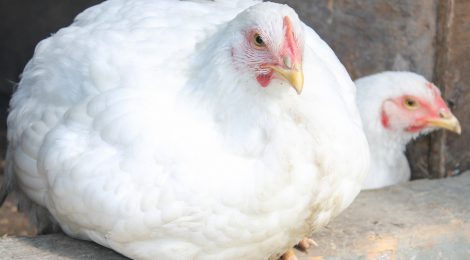
Chicken Meat “Defects” Are a Sign of Animal Suffering


Have you seen these two conditions on chicken breasts in the market? They’re called “woody breast” and “white striping” and while their exact cause is still unknown, researchers have found that the breast muscles in affected birds have reduced capillary blood supply. Without sufficient blood supply, muscle damage occurs as lactic acid cannot be cleared and remains in the breast, killing the muscle fibres.
Professor Sandra Velleman from Ohio State University described the condition of “woody breast” this way: “Wooden breast is a muscle myopathy that results in the necrosis of muscle fibres with macrophage infiltration. In response to the necrosis, fibrosis takes place, leading to connective tissue synthesis and the replacement of muscle-specific proteins with highly cross-linked collagen. The highly cross-linked collagen gives the muscle its wooden or very stiff phenotype”.
The myopathy is believed to be growth-induced, which would fit with the speed in which broiler chickens are now brought to market. The condition was first reported in 2009. From 2007-2017, the continuous selection for fast-growing chickens resulted in an almost 5% increase in breast meat yield, contributing to more than one-fifth of a bird’s weight in breast tissue alone.
The chicken industry is concerned about the issue – not because it represents the suffering of birds, but because it “significantly impacts meat texture and taste, therefore impacting consumer acceptance.”
To learn more about the broiler chicken industry in Canada, click here.


